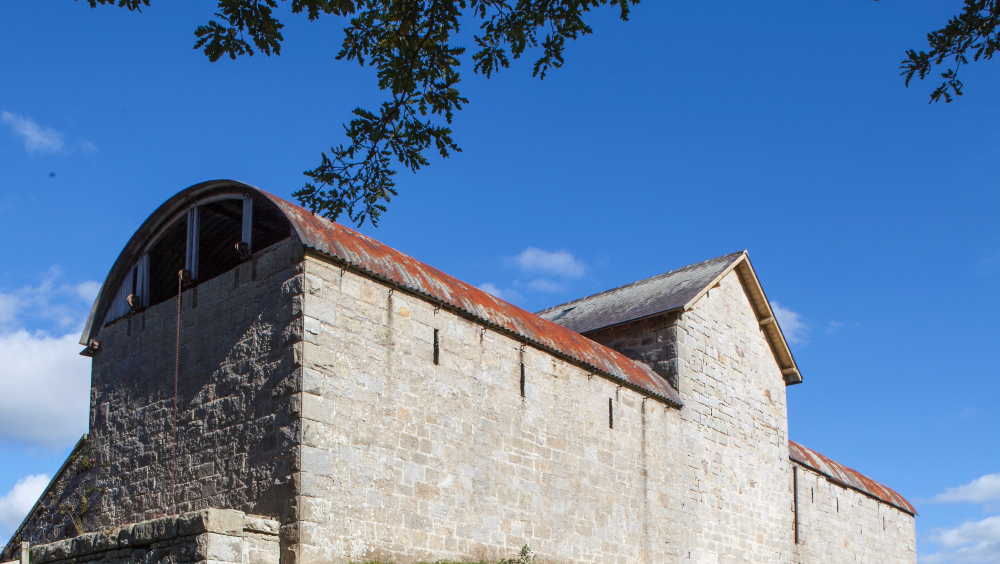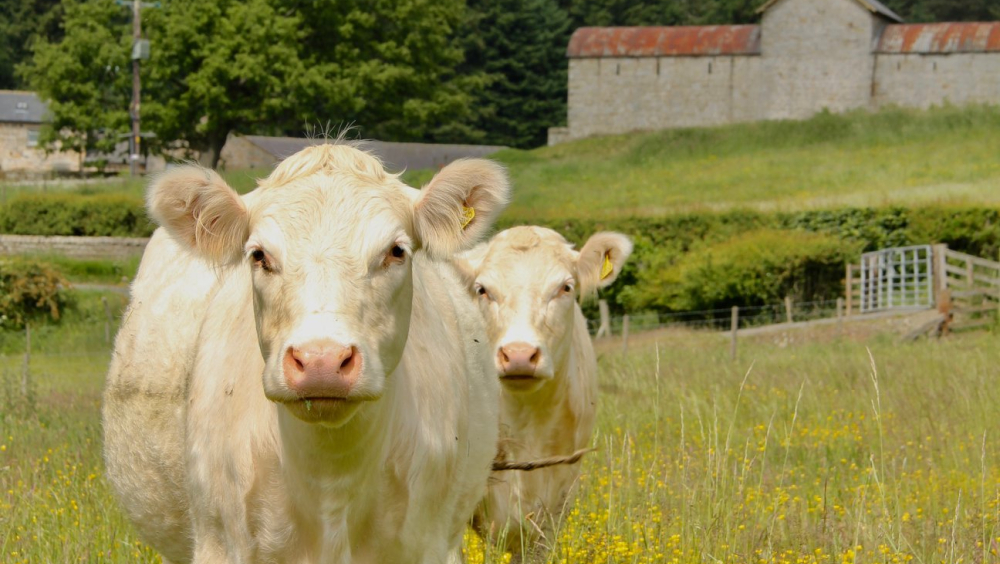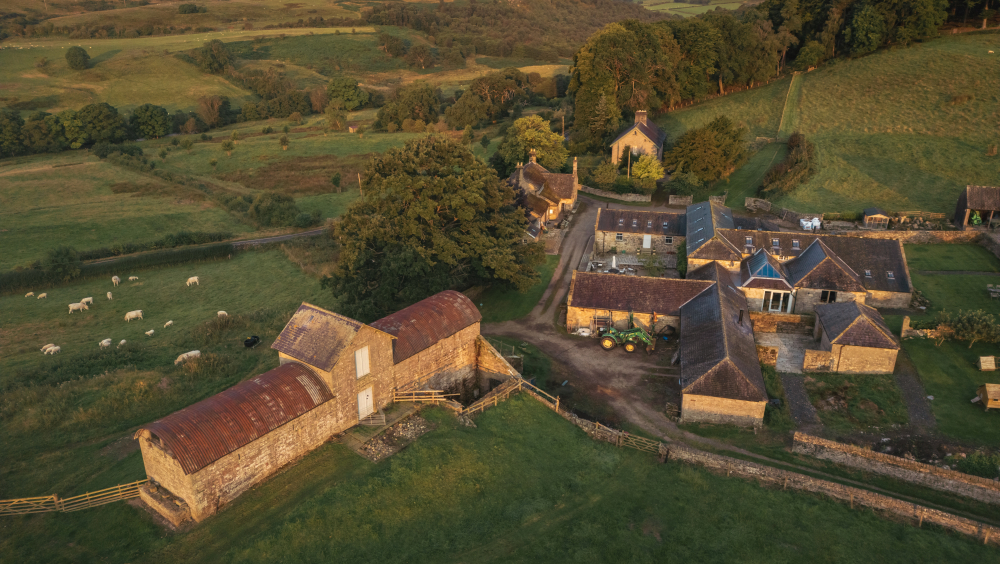Cragside's little neighbour has a big story to tell.
Nestled just outside Rothbury, Northumberland, on the southeastern side of the renowned Cragside Estate, Cragend Farm is where history, heritage, and sustainability converge. Shaun and Lou Renwick, along with their family, has transformed this once-derelict farm into a thriving hub of agricultural innovation, historical preservation, and rural charm since purchasing it in 2011.
Architect Richard Norman Shaw was integral in the building of Cragside from 1868 and his influence can be seen throughout Cragend Farm too. The farms ancient buildings were re-purposed to house Armstrong’s hydraulic water-powered machinery and the gigantic Grade II* listed Cragend Farm Hydraulic Silo building looks more like a castle, with a tower and arrowslits (for ventilation), than a silage making facility.
The unique Cragend Farm Hydraulic Silo is the only one in the world of its kind, and was built by Lord Armstrong to show case his machinery, based on the ideas of Frenchman Auguste Goffart who wrote a dissertation on Ensilage and how to produce it.
Silage is thought to have been invented in Germany, lightly based on a sauerkraut recipe in the early 19th century. Since its inception it had been a race to produce a high quoality feed to over winter the animals on farms.
This European invention, became a staple throughout Britain by the 1970's but the Cragend Farm Hydraulic Silo, built in 1884, is the only building to exist that uses water power to produce it.
Cragend Farm: A Historic Blend of Heritage, Sustainability, and Countryside Charm
Nestled just outside Rothbury, Northumberland, on the southeastern side of the renowned Cragside Estate, Cragend Farm is where history, heritage, and sustainability converge. Lou Renwick, along with her family, has transformed this once-derelict farm into a thriving hub of agricultural innovation, historical preservation, and rural charm since purchasing it in 2011.
Architect Richard Norman Shaw was integral in the building of Cragside from 1868 and his influence can be seen throughout Cragend Farm too. The farms ancient buildings were re-purposed to house Armstrong’s hydraulic water-powered machinery and the gigantic Grade II* listed Cragend Farm Hydraulic Silo building looks more like a castle than a silage making facility.
Cragend Farm is steeped in history, having been an integral part of Lord Armstrong’s pioneering Cragside Estate. Armstrong’s innovations in sustainable energy and industrial efficiency are etched into the fabric of the farm, with remnants of his visionary engineering still visible today. This continues today with a Carbon Literacy accreditation and a Green Tourism award.
During restoration, the Renwick family uncovered two rare Gilbert Gilkes of Kendal turbines, an Armstrong hoist, a weighbridge, and a one-of-a-kind hydro-powered silo used to create silage for cattle. These fascinating artifacts reflect Armstrong’s forward-thinking approach and have been meticulously preserved, offering visitors a glimpse into 19th-century ingenuity.
“Lord Armstrong was ahead of his time, blending technology with sustainability,” says Lou Renwick. “We are proud to continue his legacy while integrating modern farming techniques that honour the past.”
Cragend Farm offers Heritage Tours where visitors can explore the farms ancient past dating back to the Iron Age, with a Celtic Camp on site, and early buildings from The Border Reiver Wars. The tours bring Northumberland’s heritage to life, making the farm a must-visit destination for history lovers and engineering enthusiasts. The Grade II* listing means that the building is of National Importance and arguably ‘one of the finest purpose-built agricultural buildings in the world’.
Open to visitors from May to October Cragend Farm is thrilled to once again be taking part in Heritage Open Days in 2025.
The unique Cragend Farm Hydraulic Silo is the only one in the world of its kind, and was built by Lord Armstrong to show case his machinery, based on the ideas of Professor Goffart who wrote a dissertation on Ensilage and how to produce it.
Silage starts out as grass in the fields which is usually ready in late May. These are fields that haven't been grazed since the winter to allow the grass to grow. It's really important that the grass is cut when it contains its highest nutrient levels which is usually late spring early summer when the weather is sunny and dry.
Silage is thought to have been invented in Germany, lightly based on a sauerkraut recipe in the early 19th century. A French agriculturalist named Auguste Goffart wrote about it in 1877 and its benefits, and ensilage was produced with limited success until the First World War when it stopped being made so extensively until the late 1950’s.
This European animal feed was seen to be a valuable commodity for all farmers in the 19th century and Lord Armstrong used his engineering skills to do this in England.
The race to produce winter fodder for animals was on and Armstrong was part of this scientific endeavour. It was known that it was a difficult to produce, and needed a huge labour force to process. With this in mind, Armstrong used his hydraulics to demonstrate that many of the tasks could be done with the help of the natural resource of water power. A turbine, runs machines that cut the grass, saving much time with manual labour of cutting with shears, and a giant hoist lifts 18 one ton weights that press the grass.


